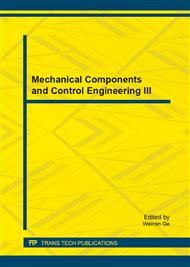p.884
p.891
p.899
p.903
p.907
p.911
p.916
p.920
p.924
Current Detection Method and its Application of an Extension pq Theory
Abstract:
In the modern society, with the rapid development of industrial technology and information industry, electrical loads become more and more complex. As a result, the harmonics and reactive power problems have become increasingly serious. In the non-sinusoidal conditions, conventional power definitions don’t work well any more. Power theory is one of the foundations of financial accounts for energy, evaluation of the efficiency of power transmission and control of current compensation. Among them, the instantaneous reactive power theory is regarded as one of the most promising power theories. What’s more, it has been improved. Based on the three-phase three-wire system and four kinds of different supply voltage conditions, this paper compares the instantaneous reactive power theory (pq theory) with the extension pq theory. At last, the simulation results are presented. As a conclusion, the extension pq theory is the improvement of the pq theory and has a wider applicability.
Info:
Periodical:
Pages:
907-910
Citation:
Online since:
October 2014
Authors:
Keywords:
Price:
Сopyright:
© 2014 Trans Tech Publications Ltd. All Rights Reserved
Share:
Citation:


